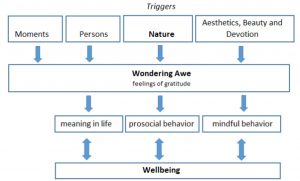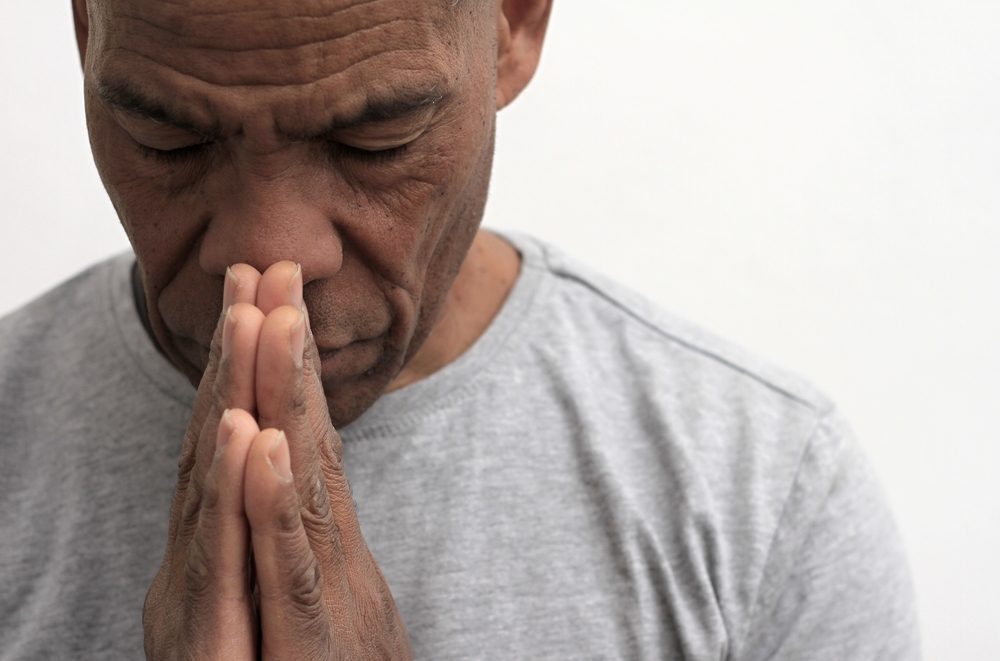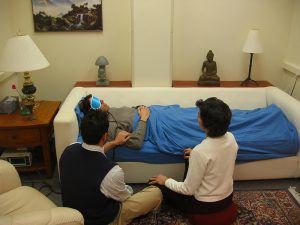
Spirituality is Associated with Awe/Gratitude and Well-Being during the Covid-19 Pandemic
By John M. de Castro, Ph.D.
“During the COVID-19 pandemic . . . spirituality and religious practices are a protective factor connected not only with psychological and mental but also physical health.” – Ilaria Coppola
The COVID-19 pandemic has challenged the mental and physical health of the population. It has created intense stress for frontline workers but also for people simply isolating at home. Religion and spirituality have been promulgated as solutions to the challenges of life. There have been a number of studies of the influence of religiosity and spirituality on the physical and psychological well-being of practitioners mostly showing positive benefits, with spirituality encouraging personal growth and mental health. Perhaps, then, spirituality can be helpful in coping with the mental and physical challenges resulting from the COVID-19 pandemic.
In today’s Research News article “Awe/Gratitude as an Experiential Aspect of Spirituality and Its Association to Perceived Positive Changes During the COVID-19 Pandemic.” (See summary below or view the full text of the study at: https://www.ncbi.nlm.nih.gov/pmc/articles/PMC8095710/ ) Büssing and colleagues recruited adults online during the Covid-19 pandemic and had them complete online measures of awe/gratitude, perception of changes, well-being, life satisfaction, perception of burden, spirituality, and physical activities.
They found that Awe/Gratitude was associated with higher levels of frequency of meditation practice, female gender, life satisfaction and well-being, faith as a stronghold, and life reflection because of the pandemic and lower levels of perceived burden. Well-being was found to be significantly associated with higher life satisfaction, nature/silence/contemplation, and awe/gratitude and with lower perceived burden. A mediation analysis revealed that awe/gratitude mediated the associations between nature/silence/contemplation and well-being, between well-being and relationships, and between well-being and reflections.
These findings must be interpreted cautiously as they were correlational and as such causation cannot be determined. But they demonstrated that perceptions of awe followed by feelings of gratitude during the Covid-19 pandemic were higher in people who were religions, meditated frequently, and with religious backgrounds. But awe/gratitude did not moderate the negative consequences of the pandemic but rather appear to be associated with higher levels of the positive aspects of life including spirituality. Awe/gratitude itself is a component of spiritual awareness and is promoted by spiritual practices such as meditation and it appears to be associated higher levels of well-being even in the face of a pandemic.
So, spirituality is associated with awe/gratitude and well-being during the Covid-19 pandemic.
“One wonders if social distancing might become the new normal, so scheduling time for spiritual life-building can become part of the change of filling the void of loneliness.” – William Creech
CMCS – Center for Mindfulness and Contemplative Studies
This and other Contemplative Studies posts are available on Twitter @MindfulResearch
Study Summary
Büssing, A., Rodrigues Recchia, D., Dienberg, T., Surzykiewicz, J., & Baumann, K. (2021). Awe/Gratitude as an Experiential Aspect of Spirituality and Its Association to Perceived Positive Changes During the COVID-19 Pandemic. Frontiers in psychiatry, 12, 642716. https://doi.org/10.3389/fpsyt.2021.642716
Abstract
Background: While the COVID-19 pandemic has affected the lives of almost all people worldwide, many people observed also positive changes in their attitudes and behaviors. This can be seen in the context of posttraumatic growth. These perceived changes refer to five main categories: Nature/Silence/Contemplation, Spirituality, Relationships, Reflection on life, and Digital media usage. A previous study with persons recruited in June 2020 directly after the lockdown in Germany showed that the best predictors of these perceived changes related to the Corona pandemic were the ability to mindfully stop and pause in distinct situations, to be “spellbound at the moment” and to become “quiet and devout,” indicating moments of wondering awe, with subsequent feelings of gratitude. Now, we intended to analyze (1) by whom and how strongly awe/gratitude was experienced during the COVID-19 pandemic, and (2) how these feelings relate to perceived changes and experienced burden, and (3) whether or not feelings of awe/gratitude contribute to participants’ well-being or may buffer perceived burden in terms of a resilience factor.
Methods: Online survey with standardized questionnaires [i.e., WHO-Five Well-being Index (WHO5), Life satisfaction (BMLSS), Awe/Gratitude scale (GrAw-7), and Perceived Changes Questionnaire (PCQ)] among 2,573 participants (68% women; mean age 48.7 ± 14.2 years, 74% with a Christian affiliation) from Germany recruited between June and November 2020.
Results: Awe/Gratitude scored significantly higher particularly among women (Cohen’s d = 0.40), older persons (d = 0.88), persons who rely on their faith as a “stronghold in difficult times” (d = 0.99), those with higher well-being (d = 0.70), and lower perceptions of loneliness (d = 0.49). With respect to perceived changes during the pandemic, more intense feelings of Awe/Gratitude were particularly related to Nature/Silence/Contemplation (r = 0.41), Spirituality (r = 0.41), and Relationships (r = 0.33). Regression analyses revealed that the best predictors of Awe/Gratitude (R2 = 0.40) were the frequency of meditation, female gender, life satisfaction and well-being, faith as a stronghold, and perceived burden and also life reflection, while Nature/Silence/Contemplation and Relationships had a further, but weaker, impact on Awe/Gratitude as a dependent variable. Awe/Gratitude was moderately associated with well-being (r = 0.32) and would predict 9% of participants’ well-being variance. The best predictors of participants’ well-being were multidimensional life satisfaction and low perceived burden (related to the pandemic), and further Awe/Gratitude and Nature/Silence/Contemplation; these would explain 47% of variance in well-being scores. However, Awe/Gratitude cannot be regarded as a buffer of the negative aspects of the COVID-19 pandemic, as it is only marginally (though negatively) related to perceived burden (r = −0.15). Mediation analysis showed that Awe/Gratitude mediates 42% of the link between well-being as a predictor on Nature/Silence/Contemplation as an outcome and has a direct effect of β = 0.15 (p < 0.001) and an indirect effect of β = 0.11 (p < 0.001). Further, Awe/Gratitude mediates 38% (p < 0.001) of the link between Nature/Silence/Contemplation as a predictor on well-being as the outcome; the direct effect is β = 0.18 (p < 0.001), and the indirect effect is β = 0.11 (p < 0.001).
Conclusions: The general ability to experience Awe/Gratitude particularly during the COVID-19 pandemic may sensitize to perceive the world around (including nature and concrete persons) more intensely, probably in terms of, or similar to, posttraumatic growth. As this awareness toward specific moments and situations that deeply “touch” a person was higher in persons with more intense meditation or prayer practice, one may assume that these practices may facilitate these perceptions in terms of a training. However, the experience of Awe/Gratitude does not necessarily buffer against adverse events in life and cannot prevent perceived burden due to the corona pandemic, but it facilitates to, nevertheless, perceive positive aspects of life even within difficult times. As Awe/Gratitude is further mediating the effects of Nature/Silence/Contemplation on well-being, intervention programs could help to train these perceptions, as these self-transcendent feelings are also related to prosocial behaviors with respectful treatment of others and commitment to persons in needs, and well-being.
https://www.ncbi.nlm.nih.gov/pmc/articles/PMC8095710/








